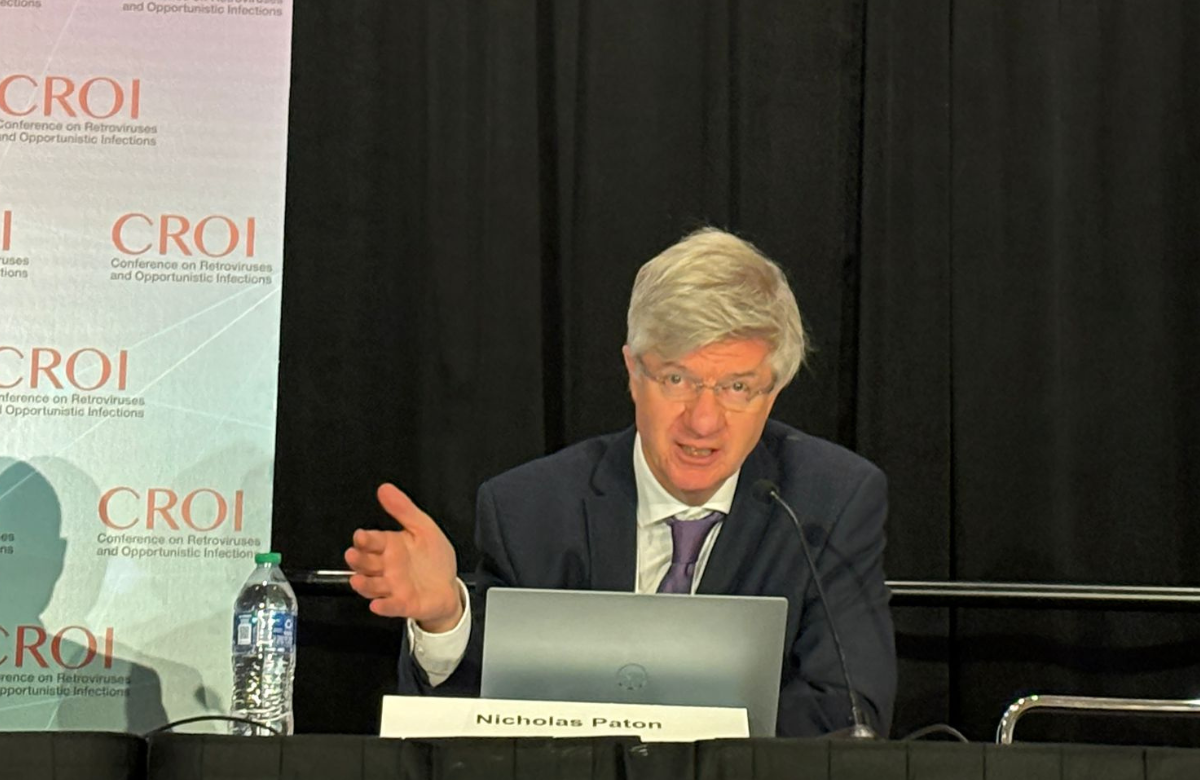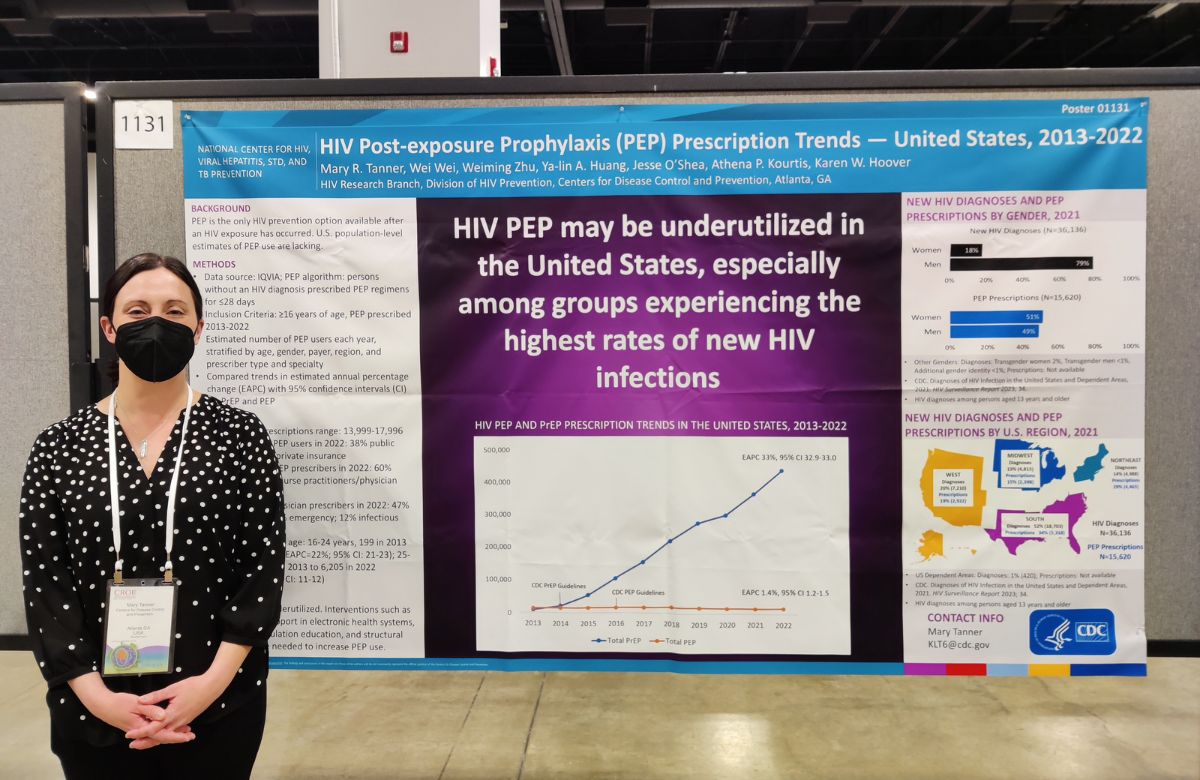STIs in San Francisco have fallen since doxyPEP roll-out

The findings were presented at the 31st Conference on Retroviruses and Opportunistic Infections (CROI 2024) taking place this week in Denver, US.
The DoxyPEP trial enrolled more than 500 gay and bisexual men and transgender women in San Francisco and Seattle who were either living with HIV or taking PrEP. After the randomised study was stopped early due to doxyPEP’s high efficacy against chlamydia and syphilis, all study participants were informed of the results and given the opportunity to take doxyPEP on an open-label basis.
Professor Annie Luetkemeyer of the University of California San Francisco reported that during the randomised phase, 12% of people in the intervention arm had STIs, compared to 31% of those in the standard-of-care arm. In the open-label extension, when doxyPEP was taken by all, STI rates were 13% and 17% in the two arms, respectively. The sharp decline in STI incidence in people who had been receiving the standard of care happened even though their number of sexual partners and condomless sex acts doubled in the short term.
In October 2022, San Francisco was the first city to recommend doxyPEP, for gay and bisexual men and transgender people.
Dr Hyman Scott reported early results from the San Francisco AIDS Foundation’s Magnet sexual health clinic, where doxyPEP has been offered to around 3000 active PrEP users since late November 2022. Among people who started doxyPEP, overall STI incidence fell from 18% to 8%, representing a 58% decrease. The decrease was greater for chlamydia (67%) and early syphilis (78%) than for gonorrhoea (an 11% fall that wasn’t statistically significant).
Dr Oliver Bacon and colleagues reported early data from City Clinic, San Francisco’s main sexual health clinic. They compared STI incidence before (November 2021 to November 2022) and after (November 2022 to November 2023) the doxyPEP guidelines were issued. Uptake of doxyPEP was high among gay men and transgender women receiving PrEP, and those who did so “had significantly reduced chlamydia and early syphilis positivity”. Positive chlamydia tests declined by 90% and early syphilis tests by 56%.
Epidemiologist Madeline Sankaran and colleagues assessed the impact of doxyPEP in a different way, looking at changes in STI incidence at the population level. The researchers tracked the number of people starting doxyPEP at three high-volume sexual health clinics – Magnet, City Clinic and Ward 86 at San Francisco General Hospital – as well as monthly cases of chlamydia, gonorrhoea and early syphilis before (July 2021 through October 2022) and after (November 2022 through November 2023) the release of the city guidance.
More than 3700 men who have sex with men and trans women started doxyPEP at the three clinics by the end of 2023. Citywide, chlamydia cases in this population declined by 7% per month, for a total decrease of 50% compared with predicted levels. Early syphilis decreased by 3% per month, for a total 51% drop. There was no significant change in gonorrhoea cases.
Taken together, these studies provide a solid body of evidence that doxyPEP is an effective intervention for reducing new cases of chlamydia and syphilis, though it is considerably less effective – if at all – against gonorrhoea.
“It’s not often in public health that you have population-level surveillance in concordance with clinical service delivery in concordance with clinical trial results, all at the same time,” CROI chair Professor Landon Myer of the University of Cape Town commented. “This, to my mind, seals the case.”
Injectable HIV treatment as effective as standard combination in Africa

The study is the first test of injectable treatment involving people living with HIV in Africa. The regimen, consisting of the integrase inhibitor cabotegravir and the non-nucleoside reverse transcriptase inhibitor (NNRTI) rilpivirine, is already approved for use in Europe, North America and Australia. Treatment is given by intramuscular injection every two months.
Before injectable treatment can be provided through HIV treatment programmes, several questions about its effectiveness need to be answered. People with HIV in Africa are more likely to have previously taken an NNRTI or to have pre-treatment resistance, either of which may compromise rilpivirine. At least one HIV subtype (A6) is known to be less susceptible to the injectable combination and a range of HIV subtypes occur in African populations, especially A1. Differences in body fat distribution can also affect absorption of the medications, when injected into the buttock muscle.
The Cabotegravir and Rilpivirine Long-Acting in Africa study (CARES) recruited 512 adults with HIV who had had suppressed viral load for at least four months on antiretroviral treatment. The study was designed to test a programme that would be practical and realistic in public healthcare facilities – without routine resistance testing, for example. The study recruited participants in Kenya (162), South Africa (106) and Uganda (244).
Participants were randomised to receive injectable treatment with cabotegravir and rilpivirine every eight weeks or the standard oral treatment offered in the participating countries (tenofovir disoproxil, lamivudine and either dolutegravir, efavirenz or nevirapine).
The study population was 57% female with a median age of 42 years. Approximately one in five participants (21%) had a body mass index of 30 or above, indicating a potential risk of suboptimal drug absorption, and 74% had previously taken an NNRTI.
At week 48, the proportions in each study arm with viral load below 50 were almost identical: 96.9% in the injectable arm and 97.3% in the standard-of-care arm.
The study shows that injectable cabotegravir and rilpivirine remain effective in people with A1 subtype.
The findings of CARES are an “essential first step in discussing the role of injectable cabotegravir and rilpivirine,” said Paton, “but there are so many things we need to do before this would translate into a [World Health Organization] public health recommendation.”
Full analysis of French STI study dashes hopes for gonorrhoea vaccine

A year ago, the interim results of the DoxyVAC study raised hopes that by combining doxyPEP with a candidate vaccine against gonorrhoea, cases of the three most important bacterial STIs could be substantially reduced in gay and bisexual men.
The final analysis of the study, however, presented at CROI 2024 by Professor Jean-Michel Molina of the Hôpital St Louis in Paris, found lower efficacy against gonorrhoea in both doxyPEP and vaccine recipients, and a rise in doxycyline resistance among doxyPEP users who did acquire gonorrhoea. This would seem to limit the usefulness of these preventive measures against gonorrhoea
When preparing the final analysis, the researchers identified some discrepancies compared to their interim results, with some gonorrhoea infections having been omitted. In addition, the final analysis included 545 study participants (rather than 502), and had up to 21 months of follow-up data rather than the 12 months in the interim analysis.
The study population was made up largely of gay men, mainly of French nationality with an average age of 40. Participants had to be already taking HIV PrEP, and they had an average time on PrEP of nearly three years. There were high rates of STIs in the year before study enrolment, with 68% having had gonorrhoea, 49% chlamydia and 21% syphilis.
The efficacy of doxyPEP against chlamydia and syphilis was little changed in the final analysis. The annual incidence of chlamydia was 42% in participants not on doxyPEP and 6% in people on doxyPEP, indicating 86% efficacy, where the interim analysis had found 89% efficacy. With syphilis, the efficacy was the same in interim and final analyses, at 79%. In other words, doxyPEP stopped four out of five syphilis infections that would otherwise have occurred and almost nine out of ten chlamydia infections.
The interim analysis had found 41% annual incidence of gonorrhoea in participants not on doxyPEP versus 20.5% in the doxyPEP arm, equating to an efficacy of 51%. However, later gonorrhoea infections made a difference. In the final analysis, the incidence of gonorrhoea was 68% in participants not on doxyPEP and 45.5% in the doxyPEP arm, implying an efficacy of 33%.
The efficacy of the candidate gonorrhoea vaccine was also found to be considerably lower in the final analysis than in the interim analysis, down from 33% to 22%.
Molina noted that the researchers had chosen gonorrhoea infection as the outcome they would judge the effectiveness of the vaccine by. It remains plausible that the vaccine is more effective in reducing the severity of gonorrhoea disease, and if the study outcome had been symptomatic infection, the results may have been more positive.
“Though a small benefit cannot be ruled out, its clinical relevance seems very limited,” Professor Molina said. A more effective vaccine is needed, and trials of a different candidate vaccine have begun.
People need pathways from PEP to PrEP – and back again

While the overall numbers of people seeking PEP remain limited, in recent years many of those accessing it have previously been prescribed PrEP. But for one reason or another, they didn’t use it consistently, and now feel the need for an emergency measure. At the same time, many people currently prescribed PEP are likely to need protection again in the coming weeks and months.
Dr Mary Tanner of the Centers for Disease Control and Prevention (CDC) pointed to a disconnect between PEP and PrEP in the US.
During PrEP’s first decade (from 2013), uptake grew steadily from zero to around 450,000 in 2022. Over the same time period, usage of PEP barely changed. Each year, there were between 14,000 and 18,000 PEP prescriptions.
Dr Tanner told aidsmap that PEP and PrEP are on the same continuum, and people using one method need to know about the other.
Guidelines in the UK recommend a smooth transition from PEP to PrEP, and Dr Gary Whitlock of 56 Dean Street reported on his clinic’s work to ensure that the recommendation is followed. This London sexual health clinic provides a quarter of all PEP prescriptions and a third of all PrEP prescriptions in England.
Since January 2021, everyone receiving PEP at 56 Dean Street is offered a one-month supply of PrEP on an opt-out basis, to be started when they complete the 28-day course of PEP.
In March and April 2022, 56 Dean Street provided PEP to 282 gay and bisexual men and 6 transgender women. A little under half were current or former PrEP users. Three-quarters of people prescribed PEP accepted the offer of PrEP, and over half later came back for a PrEP appointment.
Whitlock said that offering PrEP opens the door to a wider discussion about HIV prevention options, including checking that former or current PrEP users understand the best way to use it.
